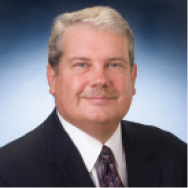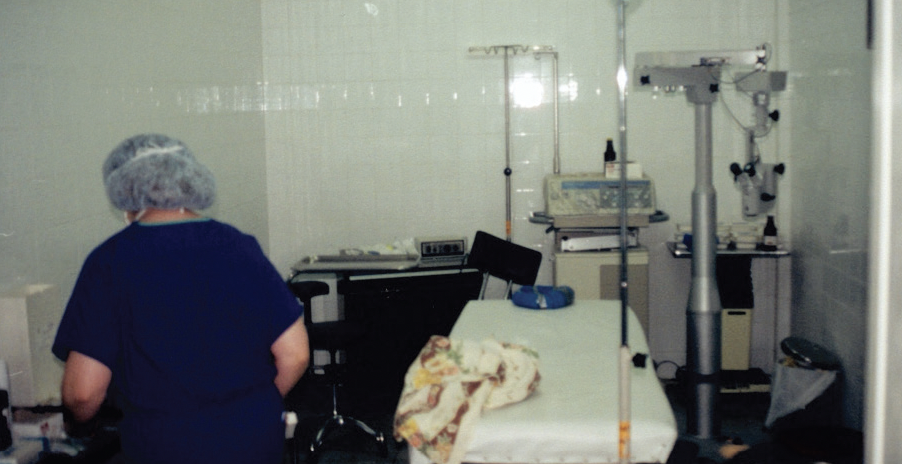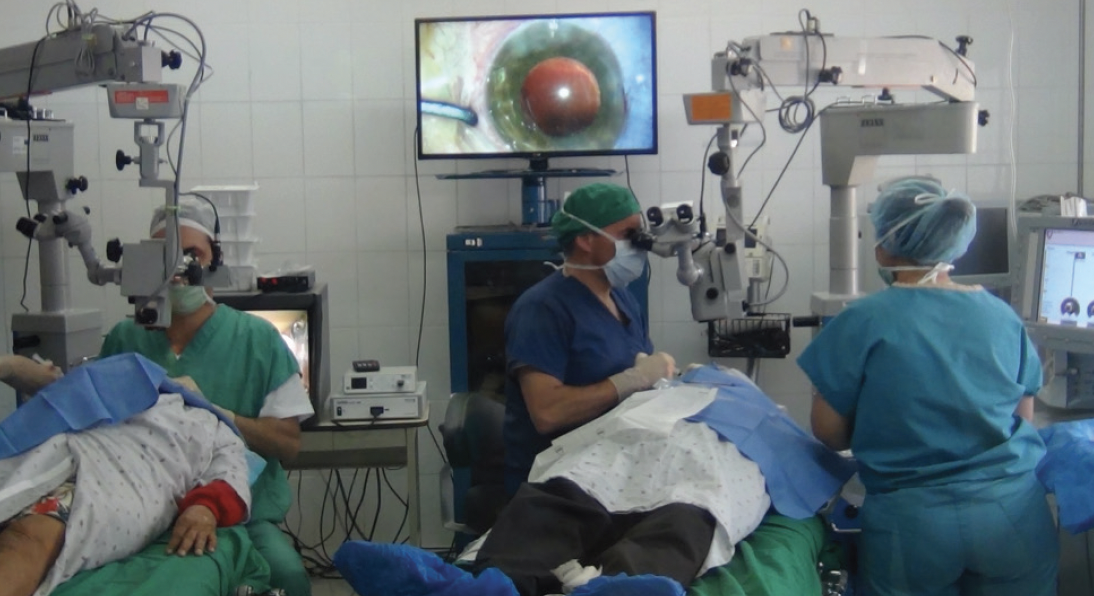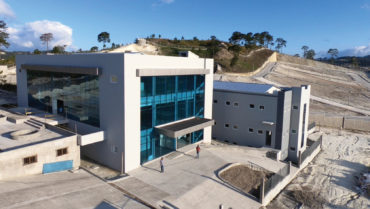
Marco Robles, MD, of Santa Rosa, Honduras, shared with me the following: “I was watching a surgical video. The surgeon was doing a great job using phaco[emulsification] and a pupil ring on a very dense cataract. [The surgeon also used] OVD [and] capsular dye. I realized … the hands were mine. I was doing this surgery with all of these high-tech American tools. It was like a dream—a dream come true for me!”
I was blessed to be a part of making Marco’s dream to be the best eye surgeon he could be a reality. This anecdote portrays why I transitioned from a private practice in Indianapolis to medical mission work in Central America. Everyone has dreams. I have achieved most of mine over a long life, but there is one that I continue to pursue: helping others achieve their dreams.
aThe dreams of many ophthalmology patients are to be able to see again—to support their families and raise their children. Marco’s dream was to help these patients, but he was born at a time and in a place that limited his ability to make a bigger impact on his patients’ lives. By giving him better tools and teaching him how to use them, I helped Marco, his patients, and myself realize our dreams. There is, of course, more to this story.
GRATITUDE
I was blessed with enough physical and academic talent to become an eye surgeon in the United States, a developed and prosperous country. I worked hard for decades to become the best eye surgeon I could be. I realized along the way, however, that I could attribute most of my success to being born at the right time, in the right place, and to good parents. In a sense, I was a product of my time and my country.
In 1989, my 4-month-old son was diagnosed with cystic fibrosis. Caring for him with my wife taught us a lot about ourselves and others, and my family’s struggle continues to this day. The biggest lesson I learned from this experience is that my position as an eye surgeon in a prosperous country allowed my family and my community to care better for my son. This realization led me to promise myself to do whatever I could to help others overcome their burdens. To make good on that promise, I began traveling to other countries for medical mission work.
I have always liked adventure and accomplishing difficult things through preparation, hard work, and some luck. I traveled to the South Pacific islands, Central America, Europe, and the Middle East to offer my services as an eye surgeon. Eventually, however, I came to see that I was a medical tourist: I was offering my surgical skills—for the benefit of some but not many—in exchange for adventure. This remains the typical way that well-meaning US surgeons provide humanitarian eye care to the developing world. Soon after my realization, I began to research other options that would allow me to make a bigger difference.
TRANSFORMATION
A trip to Honduras. I visited Honduras for the first time in 1997 and had the most difficult surgical experience of my life. The cataracts were black and too hard to cut with a scalpel on a Mayo stand. I had to relearn cataract surgery. The experience was scary but invigorating. Cataract surgery changed every one of my patients’ lives for the better. I returned home exhausted but emotionally fulfilled.
A fresh perspective on cataract surgery. The following year, at 41 years old, I needed cataract surgery. I was terrified, but I was also fortunate to have a great cataract surgeon for a partner. My surgery went well; it was convenient, painless, and almost free. I received the first FDA-approved presbyopia-correcting IOL.
My experience as a cataract surgery patient was instructive, and it demonstrated how profound the gift of sight is. It also gave me a new perspective, as I will explain later.
A transformative interaction. I returned to Honduras in 1998 on a medical mission trip. A 38-year-old cab driver with posterior subcapsular cataracts and terrible vision asked me during the informed consent process for cataract surgery, “Are you going to do phaco, Doc?” I was surprised by his question because phaco technology was nonexistent in Honduras at that time. I asked where he had learned about it.
He replied, “I read on the internet it is the best way to do cataract surgery.”
I told the patient that I could not offer phacoemulsification to him, and he decided to go home to think about whether he wished to proceed with cataract surgery. The next day, he returned and said that he could not afford to undergo phacoemulsification elsewhere.
“You don’t do phaco, but you are free,” he said, “so I have to let you do it. I sure hope you can do a good job for me.”
Fortunately, his cataract surgery went well. More importantly, our interaction changed my career. Having recently undergone cataract surgery myself, this patient’s fears and hopes resonated with me. I decided to focus my humanitarian efforts on Central America instead of traveling the globe for mission work. I also started to transfer capital equipment to Honduras to improve my surgical options. By 1999, I had modern phaco equipment and a better microscope available to me while performing cataract surgery in that country (Figure 1).

Figure 1. Dr. Waltz’s first OR in Honduras in 1999. The gurney and the surgeon’s stool were made of a single sheet of plywood.
CONCLUSION
Repeatedly returning to Honduras over time has allowed me to build both physical resources (Figure 2) and personal relationships there. Local ophthalmologists have become friends, and we have learned to work together as a team to provide more and better services in Central America.

Figure 2. Dr. Waltz’s OR in Honduras in 2014.
While he was the president of the American-European Congress of Ophthalmic Surgery (AECOS), John A. Vukich, MD, taught me how to create a large organization with the support of an ophthalmic society such as AECOS to expand my humanitarian efforts and teach a younger generation of US surgeons how to offer charitable care sustainably. Central American Eye Centers (CAEC; centralamericaneyeclinics.org) was created in 2016 with the support of AECOS and others. CAEC builds and equips facilities in Central America (Figure at outset) to provide excellent care to private-paying and underprivileged patients alike. The organization teaches local surgeons how to use modern technology to its fullest potential. CAEC also provides world-class clinical research services in part to fund its charitable care.
CAEC supports local ophthalmology residents with training, equipment, and friendship to prepare them for their future. We showcase the work of our Central American partners to foster local support for the medical services that they provide.
Through CAEC, I can help fulfill the dreams of patients and ophthalmologists who do not grow up with the opportunities I had.




